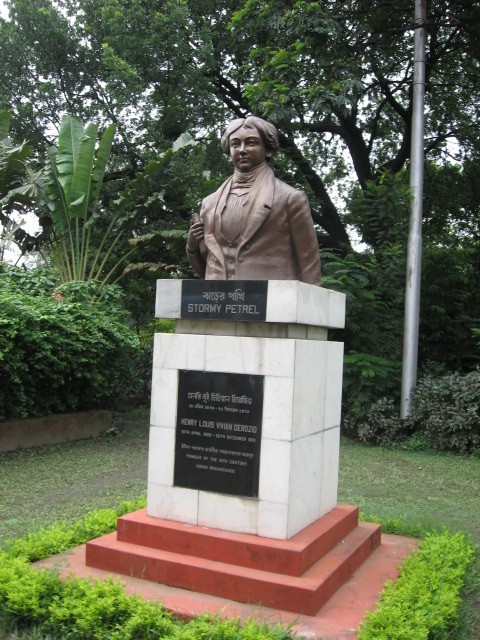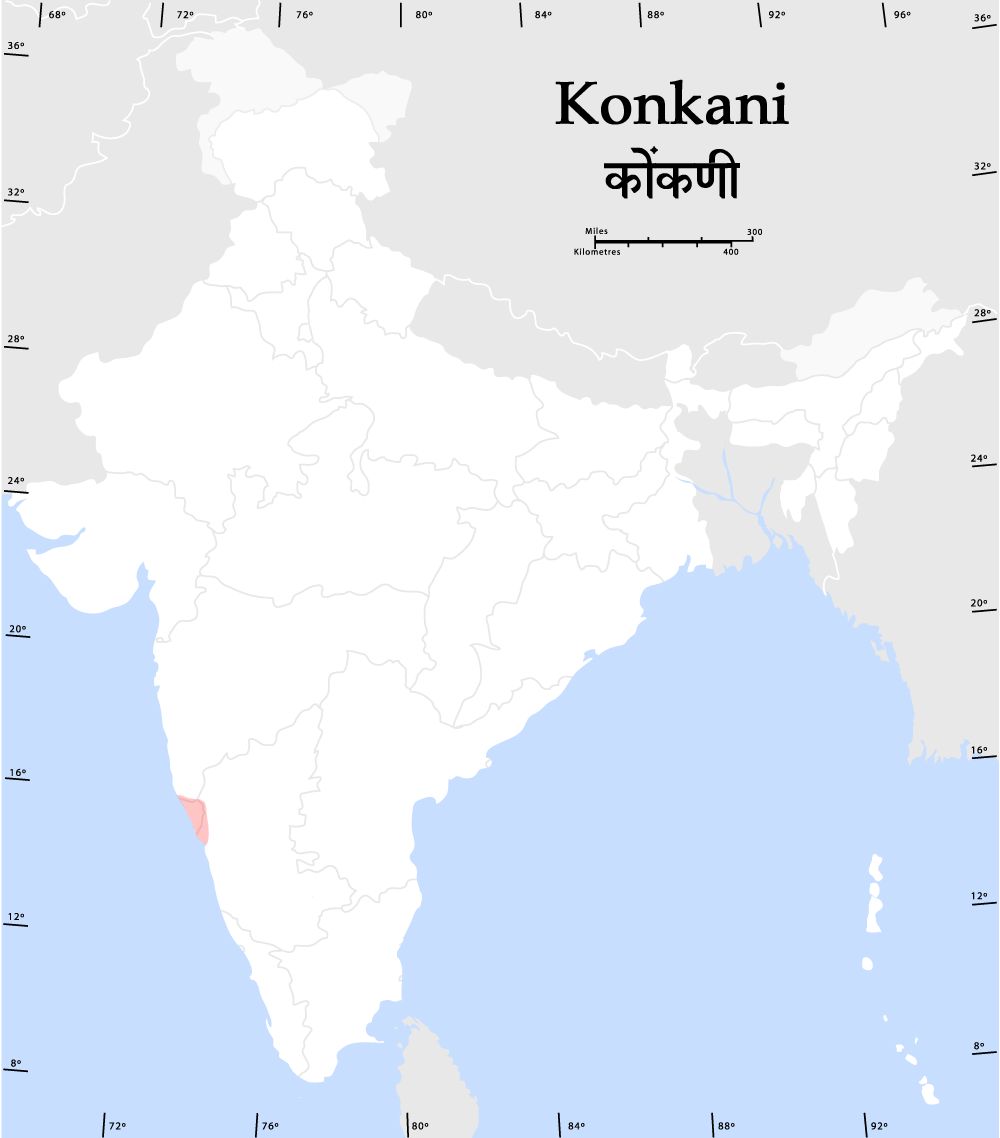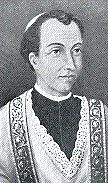|
Goan
Goans ( kok, गोंयकार, Romi Konkani: , pt, Goeses) is the demonym used to describe the people native to Goa, India, who form an ethno-linguistic group resulting from the assimilation of Indo-Aryan, Dravidian, Indo-Portuguese, and Austro-Asiatic ethnic and/or linguistic ancestries. They speak different dialects of Konkani language natively, collectively known as Goan Konkani. "''Goanese"'' is an incorrect term for Goans. Language Goans are multilingual, but mainly speak the Konkani language, a Prakrit based language belonging to the Southern group of Indo-Aryan Languages. Various dialects of Konkani spoken by the Goans which include ''Bardezkari'', ''Saxtti'', ''Pednekari and'' ''Antruz''. The Konkani spoken by the Catholics is notably different from those of the Hindus, since it has a lot of Portuguese influence in its vocabulary. Konkani was suppressed for official documentation use only not for unofficial use under the Portuguese governance, playing a minor ... [...More Info...] [...Related Items...] OR: [Wikipedia] [Google] [Baidu] |
Mangalorean Catholics
Mangalorean Catholics ( kok, Kōdiyālcheñ Kathōlikā) are an ethno-religious community of Latin Catholics in India typically residing in the Diocese of Mangalore in the erstwhile South Canara area, by the southwestern coast of present-day Karnataka. Contemporary Mangalorean Catholics descend mainly from the New Christians of Portuguese Goa, who migrated to South Canara between 1560 and 1763, throughout the course of the Goan Inquisition, the Portuguese–Adil Shahi War & the Mahratta Sackings of Goa and Bombay-Bassein. They learned Tulu and Kanarese whilst in South Canara, but retained the Konkani language and preserved much of their Konkani way of life, which had undergone Christianisation in Goa. Their 15-year-long captivity at Seringapatam imposed by Tippu Sultan, the ''de facto'' ruler of the Kingdom of Mysore, almost led the community to decimation. Following Tippu's defeat and death in the Siege of Seringapatam (1799) by the English East India Company, the Nizam ... [...More Info...] [...Related Items...] OR: [Wikipedia] [Google] [Baidu] |
Konkani Language
Konkani () is an Indo-Aryan language spoken by the Konkani people, primarily in the Konkan region, along the western coast of India. It is one of the 22 scheduled languages mentioned in the Indian Constitution, and the official language of the Indian state of Goa. It is a minority language in Karnataka, Maharashtra, Kerala, Gujarat & Damaon, Diu & Silvassa. Konkani is a member of the Southern Indo-Aryan language group. It retains elements of Vedic structures and shows similarities with both Western and Eastern Indo-Aryan languages. The first Konkani inscription is dated 1187 A.D. There are many Konkani dialects spoken along and beyond the Konkan region, from Damaon in the north to Carwar in the south, most of which are only partially and mutually intelligible with one another due to a lack of linguistic contact and exchanges with the standard and principal forms of Konkani. It is also spoken by migrants outside of the Konkan proper; in Surat, Cochin, Mangalore, ... [...More Info...] [...Related Items...] OR: [Wikipedia] [Google] [Baidu] |
Luso-Indian
Luso-Indians or Portuguese-Indian, is a subgroup of the larger multiracial ethnic creole people of Luso-Asians. Luso-Indians are people who have mixed varied Indian subcontinent and European Portuguese ancestry or people of Portuguese descent born or living or originating in former Portuguese Indian colonies, the most important of which were Goa and Damaon of the Konkan region in the present-day Republic of India (formerly British India), and their descendants/ diaspora around the world, the Anglosphere, Lusosphere, Portuguese East Indies etc. Luso-Asians of the Indian subcontinent are primarily from Velha Goa, Damaon, Dio district, St Mary's islands of Mangalore, Bombay (Mumbai), Korlai (Chaul), Vasai (Bassein), Silvassa, Cape Comorin, Fort Cochin etc. There are also a number of New Christian Brahmins and Christian Cxatrias with Portuguese surnames, but do not necessarily possess European ancestry, being named as such in the process of their religious conversion to Wes ... [...More Info...] [...Related Items...] OR: [Wikipedia] [Google] [Baidu] |
Konkani People
The Konkan people ( Konkani) Konkanis : are an Indo-Aryan ethnolinguistic group native to the Konkan region of the Indian subcontinent who speak various dialects of the Konkani language. Konkani is the state language of Goa and also spoken by populations in coastal Karnataka, coastal Maharashtra, and Kerala. Other Konkani speakers are found in Gujarat state. A large percentage of Konkani people are bilingual. Etymology The word ''Konkan'' and, in turn ''Konkani'', is derived from ' or . Different authorities explain etymology of this word differently. Some include: *''Koṇ'' meaning top of the mountain. *Name of aboriginal mother goddess, which is sometimes sanskritised to mean goddess Renuka. Thus the name ''Konkane'', comes from the word ', which means ''the people of Konkan''. Sub-ethnic groups Endonyms In general, in Konkani the masculine form used to address a Konkani speaker is ' and the feminine form is . The plural form is ''Konkane'' or ''Konkani''. In Goa ''K ... [...More Info...] [...Related Items...] OR: [Wikipedia] [Google] [Baidu] |
Vamona Navelcar
Vamona Ananta Sinai Navelcar (5 May 1930 – 18 October 2021) was an artist from Goa, India, who had studied and worked in Portugal, Mozambique, and Goa. Navelcar was born in Pomburpa village. Navelcar began his art career in Mozambique, after training in Portugal, where he also lived for some time. He excelled in Christian figurative art. He adopted the name of "Ganesh", after an incident that caused him to be "reborn" ( Lord Ganesh is associated with new beginnings) and in memory of his brother Ganesh. Navelcar had been called "a state treasure of Goa, whose remarkable oeuvre spans several decades." He had twice received the Gulbenkian Foundation Fellowships (1963 and 1971) and he won an international award at the International Exhibition of Art in Monte Carlo for his ink drawing, ''Angoch Woman''. He is considered a "prolific master of line" with a specialisation in murals and bas-relief composed of metallic, wooden and glass structures and his works form part of private an ... [...More Info...] [...Related Items...] OR: [Wikipedia] [Google] [Baidu] |
Jaime Valfredo Rangel
Dr Francisco Newton João Vicente da Piedade Jaime Valfredo Rangel (13 February 1897 – 6 July 1959) was a Goan doctor, Director of Tipografia Rangel (Rangel Printing Press), President of the Municipal Council of Bardez (Mayor of Bardez) and a delegate to the International Labour Organization for Portugal. Throughout the course of his career as the owner and director of Tipografia Rangel, Rangel was responsible for the publication of thousands of books important to Portuguese Literature and Goan Literature and publication of Portuguese newspaper O Independente and the archives of Goa Medical College (then known as the ''Arquivos da Escola Medico Cirurgica de Nova Goa'') for which he was the editor. Tipografia Rangel was one of the first private printing presses in Portuguese India and was a leader in the publishing of Portuguese Literature in Portuguese India prior to the Annexation of Goa in 1961. Early life Jaime Valfredo Rangel was born in Bastora, Bardez, Goa to Goan ... [...More Info...] [...Related Items...] OR: [Wikipedia] [Google] [Baidu] |
Vimala Devi
Vimala Devi is the pseudonym of Teresa da Piedade de Baptista Almeida (born 1932), a Goan writer, poet and translator. Life in Goa Vimala Devi was born in 1932 in the village of Britona in the parish of Penha de França, across the Mandovi river from Panjim, the principal town of Goa. At that time, large tracts of land in Britona were owned by Devi's family, which belonged to the elite Catholic Bamon or brahmin caste ' landowners. The ' class owned land and the labour of the ' class of lower-caste inhabitants in what was essentially a feudal relationship. Although this rural aristocracy was still predominant at this time, this was the period when the decline of the land-owning class first began to set in, a theme that appears in Devi's later fiction. After Goa's incorporation into India laws were passed giving the ' workers rights to the lands on which they had always lived and worked and abolishing their duty to provide unpaid labour to the ' landowners. As in many high caste ... [...More Info...] [...Related Items...] OR: [Wikipedia] [Google] [Baidu] |
Chris Perry (musician)
Chris Perry (born Christovam Pereira; 25 November 1928 − 25 January 2002), was an Indian musician, composer, songwriter, and film producer who combined jazz with Konkani music. He was known in India as the 'King of Cha Cha Cha' and the 'Man with the Golden Trumpet', and was the composer of the iconic signature song of All India Radio. Early life and career Chris Perry was born Christovam Pereira in 1928 in Borda, the second of eight children born to Agostinho and Espiciosa Pereira. Perry's family was musical and, at a young age, he entered the Tiatr (musical theater) scene, under the name 'Bab Pinto'. He began staging his own tiatrs; he is remembered locally for the plays ''Noxibantlo Nhovro'', ''Padricho Lob'', and ''Vid Mog Kornaranchem''. He became a proficient musician, particularly on the trumpet and saxophone, known for having perfect pitch (Absolute pitch), and for his ability to switch from trumpet to saxophone mid-song. He was also a prolific songwriter, writing ma ... [...More Info...] [...Related Items...] OR: [Wikipedia] [Google] [Baidu] |
Lourdino Barreto
Father Lourdino Barreto (11 February 1938 – 24 January 1997) was an Indian musicologist and Catholic priest. He is considered one of Goa's greatest Western classical musicians. Education He studied at the Pontifical Institute of Sacred Music and the National Conservatory in Rome and graduated with distinction in Gregorian chant, composition and piano. He later earned a doctorate for his thesis titled: 'Aesthetic Indian Music as a bridge between Christian and Indian Religious Music'. Career Back in Goa, he taught music at the Seminary of Saligao-Pilerne and at the Rachol Seminary of the Archdiocese of Goa and Daman, where he trained future priests in the divine chants. He conducted the Santa Cecilia Choir of Rachol Seminary, and raised the level of music in the Seminary to a high standard. He authored more than 100 compositions, some based on Indian 'Ragas', which were performed by various orchestras and musical ensembles in major capitals of the world. In addition ... [...More Info...] [...Related Items...] OR: [Wikipedia] [Google] [Baidu] |
Joseph Vaz
Joseph Vaz ( Konkani: ''San Zuze Vaza''; pt, São José Vaz; kn, ಪವಿತ್ರಾ ಯೋಸೆಫ್ ವಾಸ್ ಸಂತರು ''Pavitra Yoseph Vaz Santaru''; ta, புனித யோசேப் வாஸ் முனிவர் ''Punitha Sūsai Munivar''; si, ශාන්ත ජුසේ වාස් මුනිතුමා, ශ්රී ලංකාවේ අපෝස්තුළුවරයාණන් ''Santha Juse Vas Munithuma, Sri Lankawe Aposthuluvaraya'') (21 April 165116 January 1711) was an Oratorian priest and missionary in Sri Lanka (Ceylon), originally from Sancoale in Portuguese India. Vaz arrived in Ceylon during the Dutch occupation, when the Dutch were imposing Calvinism as the official religion after taking over from the Portuguese Empire. He travelled throughout the island bringing the Eucharist and the Sacraments to clandestine groups of crypto-Catholics. Later in his mission, he found shelter in the Kingdom of Kandy where he was a ... [...More Info...] [...Related Items...] OR: [Wikipedia] [Google] [Baidu] |
Charles Correa
Charles Mark Correa (1 September 1930 – 16 June 2015) was an Indian architect and urban planner. Credited with the creation of modern architecture in post-Independent India, he was celebrated for his sensitivity to the needs of the urban poor and for his use of traditional methods and materials. Biography Early life Charles Correa, a Roman Catholic of Goan descent, was born on 1 September 1930 in Secunderabad. He began his higher studies at St. Xavier's College, Mumbai. He went on to study at the University of Michigan (1949–53) where Buckminster Fuller was a teacher, and the Massachusetts Institute of Technology (1953–55) where he obtained his master's degree. Career In 1958, Charles Correa established his own professional practice in Mumbai. His first significant project was the Mahatma Gandhi Sangrahalaya ( Mahatma Gandhi Memorial) at Sabarmati Ashram in Ahmedabad (1958–1963), followed by the Madhya Pradesh Legislative Assembly in Bhopal (1967). In 1961-1966, h ... [...More Info...] [...Related Items...] OR: [Wikipedia] [Google] [Baidu] |
East Indians
The East Indians, also called East Indian Catholics or Bombay East Indians, are an ethno-religious Indian Christian community native to the Seven Islands of Bombay and the neighbouring Mumbai Metropolitan Area of the Konkan Division. History Pre-Portuguese era A Dominican missionary by the name Jordanus Catalani, who was either Catalan or Occitan (southern French), began evangelising the locals in Sopara, Thana & Kalyan-Dombivli towns of north Konkan in around 1323 AD. Sopara was an ancient port and an international trading center. Portuguese era After ushering in the Age of Discovery, Portuguese Armadas under the command of Vasco Da Gama found their way to India in 1498 via the Cape Route. In the next few years they acquired many colonial possessions in what would become the Portuguese East Indies; their main aims were to capitalise on the spice trade and promotion of Christian missions to convert indigenous peoples, for which the Primate of the East Indies ... [...More Info...] [...Related Items...] OR: [Wikipedia] [Google] [Baidu] |


